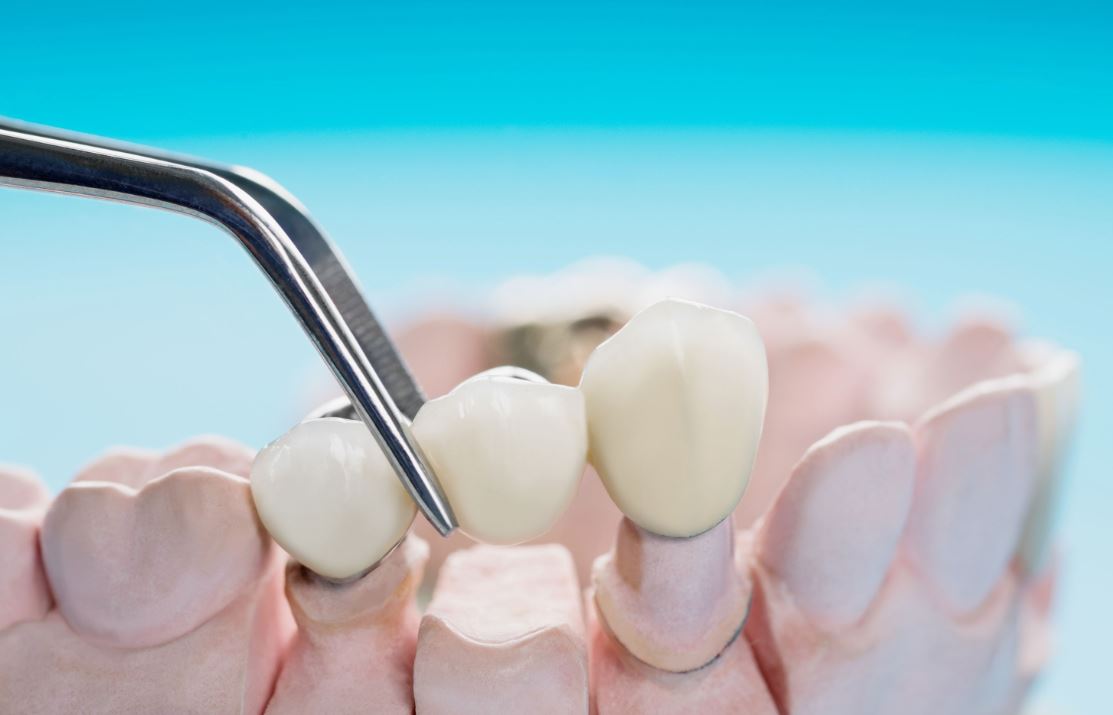Dental bridges are one of the best solutions for replacing missing teeth. However, like any dental treatment, bridges come with both advantages and disadvantages. Before you decide whether or not to restore your smile with a cost for dental bridges near me, here’s what you need to know about the pros and cons of dental bridges.
What Are Dental Bridges?
Dental bridges are fixed dental appliances designed to replace one or more missing teeth by bridging the gap between adjacent natural teeth or dental implants. These prosthetic devices consist of one or more artificial teeth (pontics) that are anchored to dental crowns or abutments placed on the teeth or implants on either side of the gap. Custom-made to match the color and shape of your natural teeth, dental bridges offer an aesthetically pleasing and functional solution for restoring a complete smile and improving bite function.
Types of Dental Bridges
There are several types of dental bridges, each catering to specific dental needs:
Traditional Dental Bridges
These bridges are a common choice for replacing missing teeth. They consist of pontics held in place by crowns on either side, which are fitted onto healthy adjacent teeth after some enamel is removed. Traditional bridges effectively restore the function and appearance of missing teeth but require alteration of the adjacent teeth, potentially weakening them over time.
Cantilever Bridges
Similar to traditional bridges, cantilever bridges differ in that they are supported by only one crown on a single adjacent tooth. This option is suitable when there is only one healthy adjacent tooth available. However, cantilever bridges may exert more force on the supporting tooth, making them less balanced than traditional bridges.
Maryland (Resin-Bonded) Bridges
A conservative alternative for replacing front teeth, Maryland bridges use a metal or porcelain framework to bond pontics to the backs of adjacent teeth. Unlike traditional bridges, Maryland bridges don’t require enamel removal, preserving the integrity of adjacent teeth. However, they may not be as strong or stable as traditional bridges and are best suited for specific cases.
Implant-Supported Bridges
These bridges offer exceptional stability by anchoring to dental implants rather than adjacent teeth. Ideal for replacing multiple missing teeth, implant-supported bridges don’t affect neighboring natural teeth. Though they have a higher initial cost due to the surgical procedure required for implant placement, they provide long-lasting and reliable results.
The Pros of Dental Bridges
- Achieve a Beautiful and Natural-Looking Smile: Dental bridges are typically made from porcelain, a material that closely resembles natural teeth. Your dentist will match the color and shape of the bridge to your existing teeth, making the transition seamless and nearly undetectable.
- Quick and Easy Placement: Dental bridges can be placed relatively quickly, usually within two visits to the dentist. The first appointment involves taking molds and preparing adjacent teeth, while the second appointment is for fitting the bridge. If additional dental work or implants are required, more visits may be needed.
- Comfortable Solution: Once placed, dental bridges feel comfortable, allowing you to eat, speak, and chew without any discomfort. The adjustment period is minimal, and you can enjoy a natural-feeling smile almost immediately.
- Prevents Bone Loss: Replacing missing teeth with a dental bridge helps maintain the health of your jawbone by stimulating it during biting and chewing, preventing the bone from weakening over time.
- Prevents Teeth from Shifting: Filling the gap left by missing teeth with a bridge prevents surrounding teeth from shifting out of alignment, maintaining the overall structure of your smile.
- Easy to Maintain: Dental bridges don’t require special removal for cleaning. You can brush them along with your natural teeth, making maintenance straightforward as long as you keep up with regular dental hygiene and visits.
- Long-Lasting Solution: With proper care, dental bridges can last between five to 15 years, offering a durable solution to missing teeth.
The Cons of Dental Bridges
- Not Permanent: While dental bridges can last over ten years, they will eventually need to be replaced. Regular replacements are necessary to keep your smile healthy and prevent wear and tear on the teeth beneath the crowns.
- Healthy Teeth Must Be Filed: Before fitting a dental bridge, the adjacent teeth need to be filed down to accommodate the crowns. Once this is done, these teeth will always require crowns.
- Risk of Nerve Damage: Although rare, there is a slight risk of nerve damage during the procedure, which could lead to the need for root canal treatment in the future.
- Flossing Can Be Challenging: Cleaning around a dental bridge, particularly underneath it, can be tricky. Special techniques and products may be required to prevent plaque buildup between the bridge and your gums.
Conclusion
Smile dentist san jose offer a reliable and aesthetically pleasing solution for replacing missing teeth, but they come with their own set of pros and cons. By understanding these factors, you can make an informed decision about whether a dental bridge is the right choice for restoring your smile.



